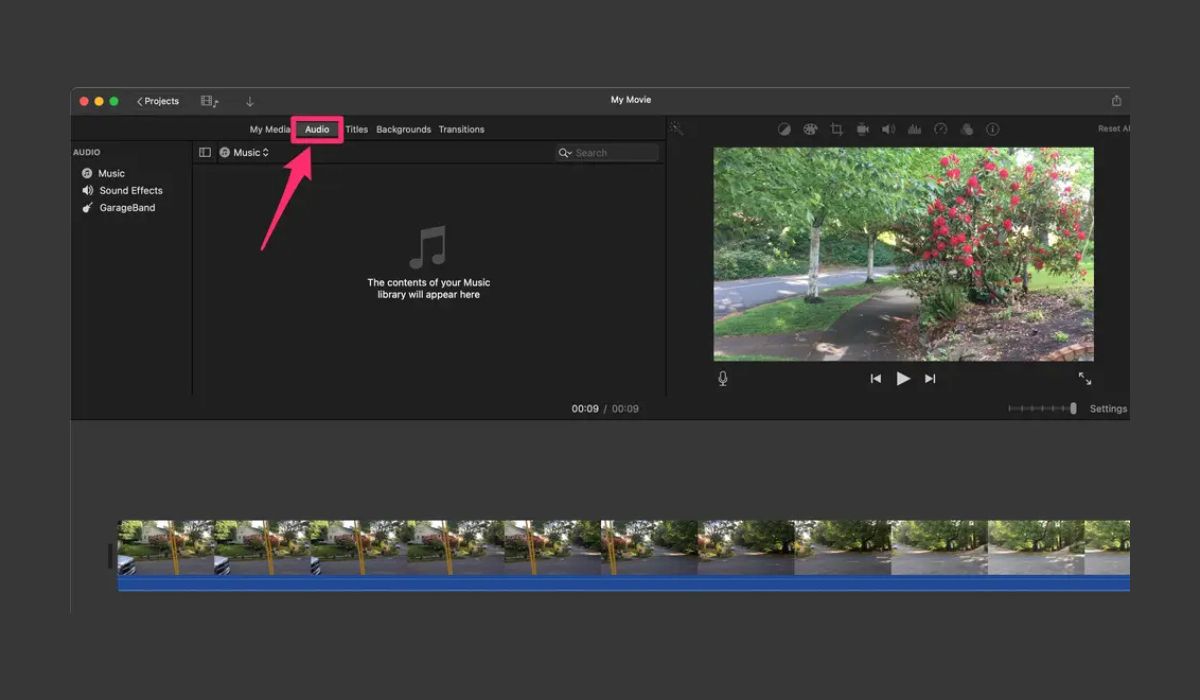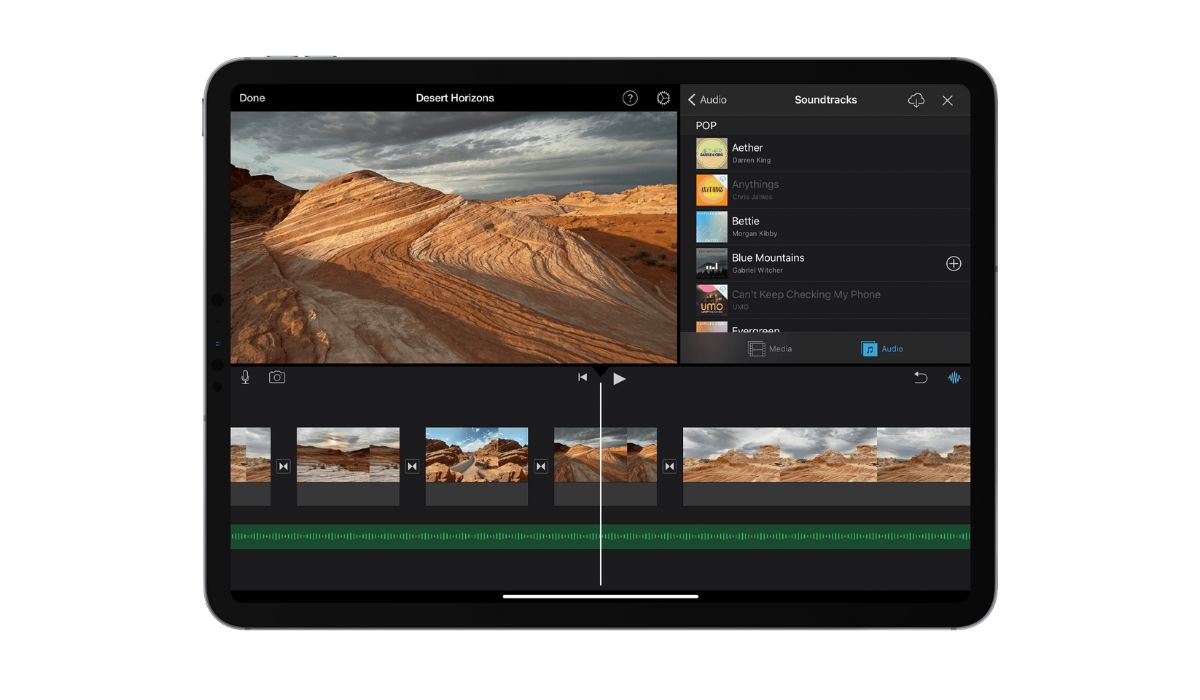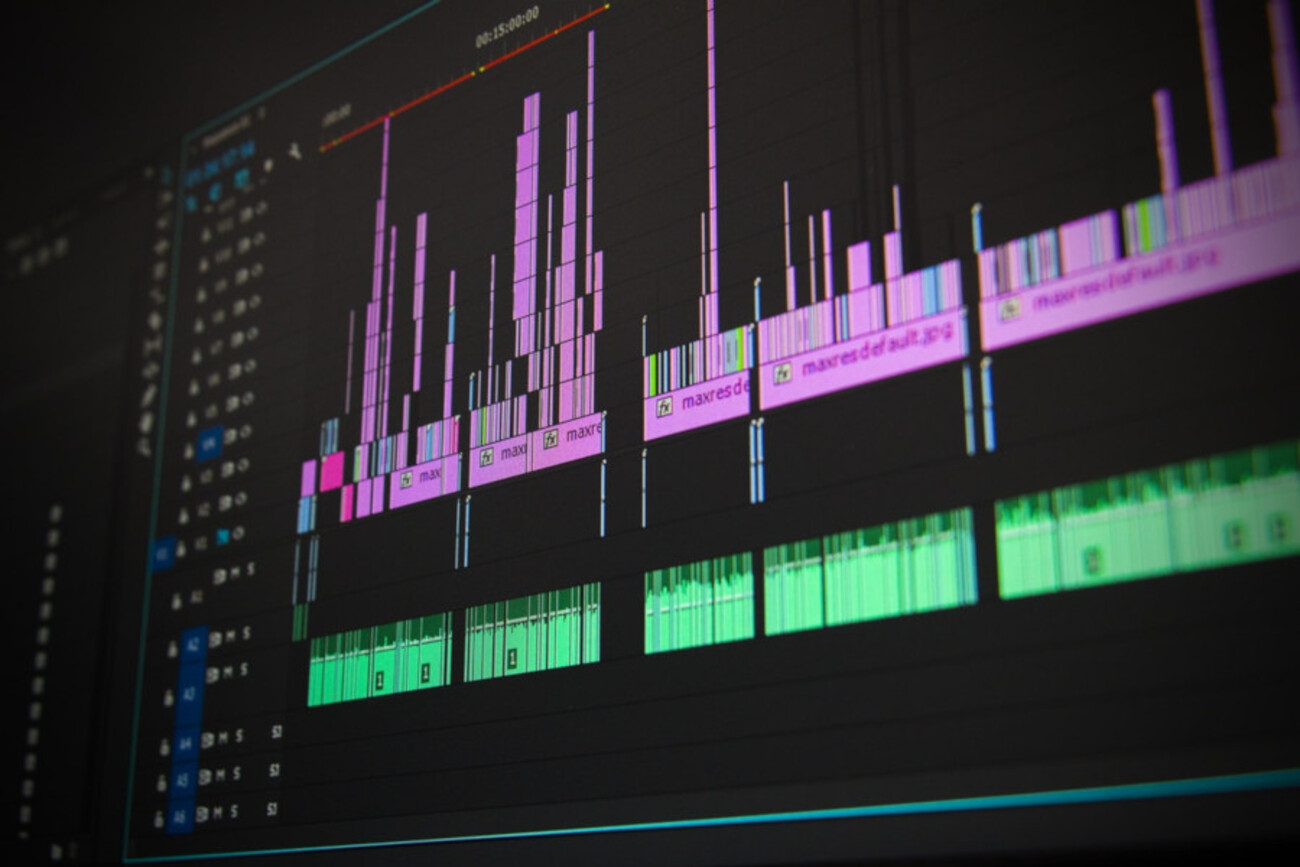Home>Production & Technology>Soundtrack>What Is A Soundtrack?


Soundtrack
What Is A Soundtrack?
Published: February 18, 2024
Discover the role of a soundtrack in enhancing the mood and storytelling of a film or video game. Learn how soundtracks create an immersive experience for the audience. Explore the importance and impact of soundtracks in entertainment.
(Many of the links in this article redirect to a specific reviewed product. Your purchase of these products through affiliate links helps to generate commission for AudioLover.com, at no extra cost. Learn more)
Table of Contents
- What Is A Soundtrack?
- Understanding the Essence of a Soundtrack
- Tracing the Evolution of Soundtracks Through Time
- Exploring the Diverse Landscape of Soundtrack Variants
- Unveiling the Profound Significance of Soundtracks in Visual Media
- Deconstructing the Intricacies of Soundtrack Composition
- The Art and Process of Crafting Sonic Narratives
- Elevating the Art of Storytelling Through Sonic Alchemy
Introduction
What Is A Soundtrack?
When you think about your favorite movie or TV show, what comes to mind? The characters, the plot, the visuals – all of these elements contribute to the overall experience. However, there’s another crucial aspect that often goes unnoticed but plays a significant role in shaping the emotional impact of a scene: the soundtrack.
A soundtrack is more than just background music; it’s a powerful tool that enhances storytelling, evokes emotions, and immerses the audience in the narrative. Whether it’s a haunting melody that sends shivers down your spine or an upbeat tune that makes you want to dance, the soundtrack has the ability to elevate the viewing experience to new heights.
From the iconic theme of “Jaws” that induces fear with a few simple notes to the uplifting soundtrack of “The Lion King” that tugs at the heartstrings, soundtracks have the remarkable ability to leave a lasting impression, often lingering in our memories long after the credits have rolled.
Definition of a Soundtrack
Understanding the Essence of a Soundtrack
At its core, a soundtrack refers to the audio component accompanying visual content, such as a film, television show, video game, or even a theatrical performance. It encompasses a diverse range of musical compositions, sound effects, and dialogue that synchronize with the on-screen action, effectively enriching the overall sensory experience for the audience.
When we delve deeper into the definition of a soundtrack, we uncover its multifaceted nature. It serves as a vital storytelling device, seamlessly intertwining with the visuals to convey emotions, establish atmosphere, and underscore pivotal moments within the narrative. Moreover, the soundtrack is instrumental in shaping the audience’s perception of characters and events, wielding the power to evoke empathy, suspense, excitement, or nostalgia.
While music undoubtedly forms the backbone of most soundtracks, it’s important to recognize that soundtracks extend beyond melodies and harmonies. They encompass ambient sounds, foley effects, and dialogue tracks, all meticulously crafted to complement the visual elements and transport viewers into the fictional world on screen.
Furthermore, the notion of a soundtrack has evolved with the advent of streaming platforms and digital media, expanding its domain to encompass standalone albums released in conjunction with visual media, as well as curated playlists that evoke the essence of a particular film or TV series. This adaptability underscores the dynamic and far-reaching influence of soundtracks in contemporary entertainment.
History of Soundtracks
Tracing the Evolution of Soundtracks Through Time
The history of soundtracks is deeply intertwined with the evolution of audio-visual media. While the concept of synchronized sound and image dates back to the early experiments in film and theater, the true emergence of soundtracks as we know them today can be traced to the era of silent films.
During the silent film era, live musical accompaniment played a pivotal role in enhancing the cinematic experience. Accomplished pianists, organists, or even small orchestras would perform alongside the screening, providing aural cues to mirror the on-screen action and evoke the intended emotions. This practice not only underscored the dramatic beats of the narrative but also filled the silence, effectively bridging the auditory gap left by the absence of dialogue.
The transition to synchronized sound in films, known as “talkies,” marked a revolutionary shift in the realm of soundtracks. With the advent of recorded dialogue and musical scores, soundtracks evolved into integral components of the cinematic landscape, contributing to the immersive nature of storytelling. Iconic film scores, such as Max Steiner’s composition for “King Kong” in 1933, showcased the potential of music to heighten the emotional impact of on-screen narratives.
As the decades unfolded, soundtracks continued to evolve in tandem with technological advancements and artistic innovations. The 1960s and 1970s witnessed a surge in the use of popular music in films, with directors leveraging chart-topping hits to enhance the cultural resonance of their narratives. This era birthed timeless soundtracks, such as the iconic songs featured in “Easy Rider” (1969) and the groundbreaking fusion of music and imagery in “2001: A Space Odyssey” (1968).
Fast forward to the present day, and the landscape of soundtracks has expanded exponentially. The advent of digital streaming platforms, coupled with the proliferation of original content across various mediums, has ushered in a renaissance of diverse and innovative soundtracks. From orchestral masterpieces accompanying epic blockbusters to curated playlists amplifying the emotional beats of a television series, soundtracks continue to captivate audiences and enrich the audio-visual experience in profound ways.
Types of Soundtracks
Exploring the Diverse Landscape of Soundtrack Variants
Soundtracks encompass a rich tapestry of musical and sonic expressions, reflecting the multifaceted nature of visual storytelling across various media. The following are some of the prominent types of soundtracks that have left an indelible mark on the entertainment landscape:
- Original Score: This type of soundtrack features compositions specifically crafted to complement the narrative and emotional arcs of a film, TV show, or video game. Original scores are meticulously tailored to accentuate pivotal moments, evoke specific moods, and resonate with the thematic essence of the visual content.
- Compilation Soundtrack: Compilation soundtracks curate a selection of pre-existing songs and compositions, often spanning diverse genres, to underscore the themes and scenes within a visual work. These soundtracks leverage established tracks to amplify the cultural and emotional resonance of the narrative, offering a blend of familiar tunes and new discoveries for the audience.
- Musical Soundtrack: Musicals, renowned for their integration of song and dance into the storytelling fabric, feature soundtracks that are intrinsic to the narrative progression. These soundtracks comprise original songs that drive the plot, convey character emotions, and encapsulate the essence of the theatrical performance or cinematic production.
- Video Game Soundtrack: Video game soundtracks have emerged as a distinct art form, with composers crafting immersive and dynamic musical landscapes that adapt to the interactive nature of gaming. These soundtracks are designed to enhance gameplay, heighten emotional engagement, and provide a sonic backdrop that evolves in response to the player’s actions.
- Television Series Soundtrack: Television series soundtracks encapsulate the sonic identity of a show, featuring recurring themes, background scores, and licensed tracks that resonate with the evolving narrative arcs and character dynamics. These soundtracks serve as sonic signatures, imprinting the essence of the series in the minds of viewers.
Each type of soundtrack brings forth a unique auditory experience, enriching the visual narratives and leaving a lasting imprint on the audience’s perception and emotional engagement.
Importance of Soundtracks
Unveiling the Profound Significance of Soundtracks in Visual Media
The role of soundtracks transcends mere auditory accompaniment, wielding a profound influence on the emotional resonance, narrative dynamics, and immersive quality of visual media. Here are key facets underscoring the paramount importance of soundtracks:
- Emotional Resonance: Soundtracks serve as emotive conduits, amplifying the impact of storytelling by evoking and intensifying emotions within the audience. Whether instilling a sense of euphoria, melancholy, tension, or triumph, the soundtrack’s ability to orchestrate emotional landscapes is pivotal in shaping the viewer’s empathetic connection with the narrative and characters.
- Atmospheric Enhancement: Soundtracks play a pivotal role in establishing and accentuating the atmospheric backdrop of visual narratives. From ominous undertones that foreshadow impending danger to uplifting melodies that infuse scenes with hope and optimism, soundtracks are instrumental in crafting immersive environments that transcend the visual realm.
- Narrative Pacing and Dynamics: The strategic integration of soundtracks contributes to the rhythmic cadence and dramatic pacing of storytelling, heightening the impact of pivotal moments and imbuing sequences with a sense of urgency, poignancy, or grandeur. Soundtracks serve as narrative anchors, guiding the audience through the ebb and flow of the visual journey.
- Character and Theme Amplification: Soundtracks possess the remarkable ability to encapsulate the essence of characters and themes, enriching the audience’s understanding and connection with the narrative elements. Whether through leitmotifs that underscore character traits or thematic motifs that symbolize overarching concepts, soundtracks infuse depth and nuance into the storytelling fabric.
- Cultural and Memorable Impact: Iconic soundtracks have the potential to transcend the confines of their original medium, permeating popular culture and leaving an indelible imprint on collective memory. From instantly recognizable themes that evoke nostalgia to songs that become synonymous with specific cinematic moments, soundtracks wield a lasting cultural influence.
Collectively, these aspects underscore the indispensable role of soundtracks in elevating the sensory experience, narrative resonance, and cultural legacy of visual media, cementing their status as integral components of the storytelling tapestry.
Elements of a Soundtrack
Deconstructing the Intricacies of Soundtrack Composition
A comprehensive understanding of soundtracks entails an exploration of the constituent elements that converge to form a cohesive auditory tapestry. The following components collectively shape the sonic landscape of a soundtrack:
- Music: At the core of a soundtrack lies the musical composition, ranging from orchestral scores and instrumental arrangements to vocal performances. The music serves as the primary emotive conduit, harmonizing with visual narratives to evoke emotions, underscore themes, and accentuate pivotal moments.
- Sound Effects: Beyond music, soundtracks incorporate a diverse array of sound effects, encompassing ambient sounds, foley effects, and environmental noises. These elements contribute to the immersive quality of the soundtrack, heightening sensory engagement and enriching the sonic backdrop of visual storytelling.
- Dialogue: In the realm of film and television soundtracks, dialogue plays a pivotal role in shaping the auditory landscape. The seamless integration of dialogue tracks, characterized by nuanced vocal performances and emotive delivery, adds an additional layer of depth and authenticity to the soundtrack.
- Leitmotifs: A hallmark of sophisticated soundtrack composition, leitmotifs are recurring musical themes associated with specific characters, locations, or concepts within the narrative. These motifs serve as mnemonic devices, imbuing the soundtrack with thematic cohesion and character identity while facilitating narrative continuity.
- Rhythmic Cues: Soundtracks are intricately woven with rhythmic cues that synchronize with the pacing and dynamics of visual sequences. Whether accentuating action sequences with pulsating rhythms or infusing contemplative moments with subdued cadences, rhythmic cues contribute to the kinetic energy and emotional cadence of the narrative.
By harmonizing these elements with precision and artistry, composers and sound designers craft soundtracks that transcend mere accompaniment, evolving into integral components that elevate the sensory experience, narrative resonance, and cultural legacy of visual media.
Creating a Soundtrack
The Art and Process of Crafting Sonic Narratives
The creation of a compelling soundtrack is a nuanced and collaborative endeavor, encompassing a multifaceted creative process that harmonizes musical composition, sound design, and thematic resonance. The following steps illuminate the intricate journey of bringing a soundtrack to life:
- Understanding the Narrative Essence: The foundation of a captivating soundtrack lies in a deep comprehension of the narrative’s thematic underpinnings, emotional arcs, and character dynamics. This entails close collaboration with directors, producers, and creative stakeholders to discern the sonic identity that best amplifies the storytelling canvas.
- Compositional Exploration: Composers embark on an exploratory phase, delving into the emotive core of the narrative to craft musical motifs, melodies, and harmonies that resonate with the thematic essence. This process involves iterative experimentation to encapsulate the intended emotional range and tonal nuances of the visual content.
- Sound Design and Integration: Concurrently, sound designers curate a tapestry of sonic elements, encompassing ambient sounds, foley effects, and dialogue tracks that seamlessly synchronize with the musical composition. The integration of sound effects and dialogue is meticulously calibrated to enhance immersion and sensory engagement.
- Thematic Leitmotifs and Integration: A hallmark of sophisticated soundtrack creation involves the development of leitmotifs – recurring musical themes associated with specific characters, locations, or narrative motifs. These leitmotifs are strategically woven into the soundtrack, fostering thematic cohesion and character identity while facilitating narrative continuity.
- Collaborative Iteration and Refinement: The creative process unfolds through iterative collaboration, with composers, sound designers, and directors engaging in a symbiotic exchange to refine and elevate the sonic narrative. This iterative refinement ensures that the soundtrack harmonizes seamlessly with the visual elements, elevating the emotional resonance and immersive quality of the narrative.
Through this intricate interplay of creativity, technical acumen, and collaborative synergy, the process of creating a soundtrack culminates in a sonic tapestry that transcends mere accompaniment, evolving into an integral and evocative component that amplifies the sensory experience and narrative resonance of visual media.
Conclusion
Elevating the Art of Storytelling Through Sonic Alchemy
The realm of soundtracks stands as a testament to the profound impact of auditory accompaniment in shaping the emotional resonance, narrative dynamics, and immersive quality of visual media. From the evocative strains of an original score to the meticulously curated compilation of pre-existing tracks, soundtracks wield an indelible influence, transcending their role as mere accompaniment to become integral components that enrich the sensory experience and cultural legacy of storytelling.
At the heart of every compelling soundtrack lies the fusion of artistry, technical precision, and thematic resonance. Composers, sound designers, and creative collaborators embark on a collaborative odyssey, delving into the emotive core of narratives to craft sonic landscapes that harmonize with visual elements, evoke emotions, and amplify the thematic essence. Through the strategic integration of music, sound effects, dialogue, leitmotifs, and rhythmic cues, soundtracks unfold as immersive narratives in their own right, weaving a symphony of auditory elements that resonate with audiences on a profound emotional and cultural level.
As we traverse the diverse landscape of soundtracks – from the evocative original scores underscoring cinematic epics to the dynamic soundscapes accompanying interactive gaming experiences – we bear witness to the transformative power of soundtracks in elevating storytelling to new heights. The cultural resonance of iconic soundtracks reverberates across generations, imprinting enduring memories and transcending the confines of their original mediums to permeate popular culture.
Ultimately, the significance of soundtracks extends far beyond their auditory allure. They stand as testaments to the symbiotic relationship between sound and image, the alchemical fusion of creativity and technical craftsmanship, and the timeless resonance of storytelling through sonic artistry. As we continue to embark on cinematic, theatrical, and interactive journeys, let us embrace the profound impact of soundtracks, recognizing them as indispensable conduits that enrich our collective experience of visual narratives, elevate emotional engagement, and leave an indelible imprint on the cultural tapestry of storytelling.











